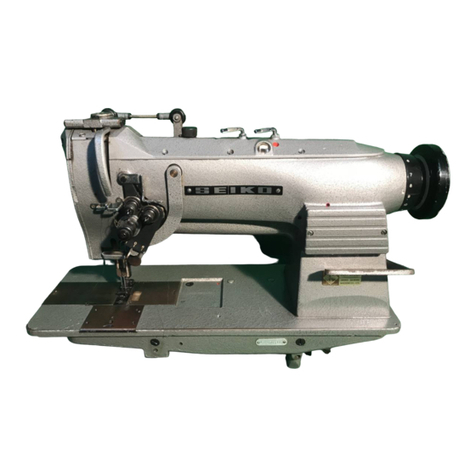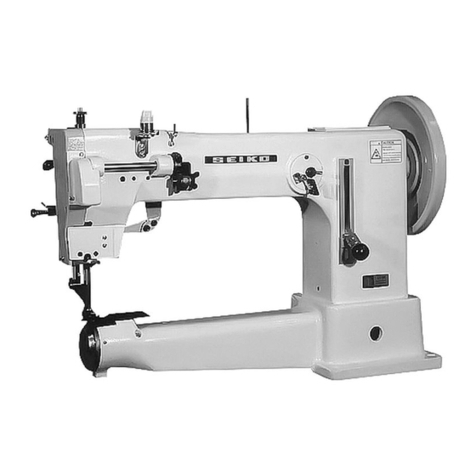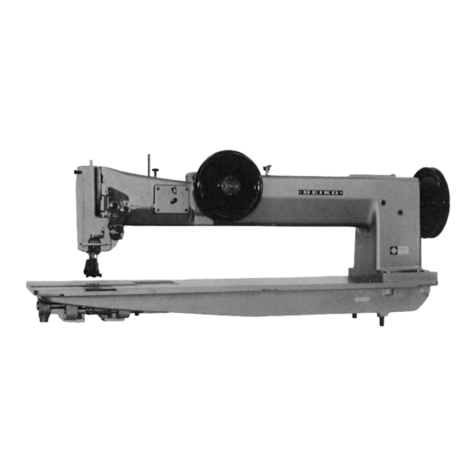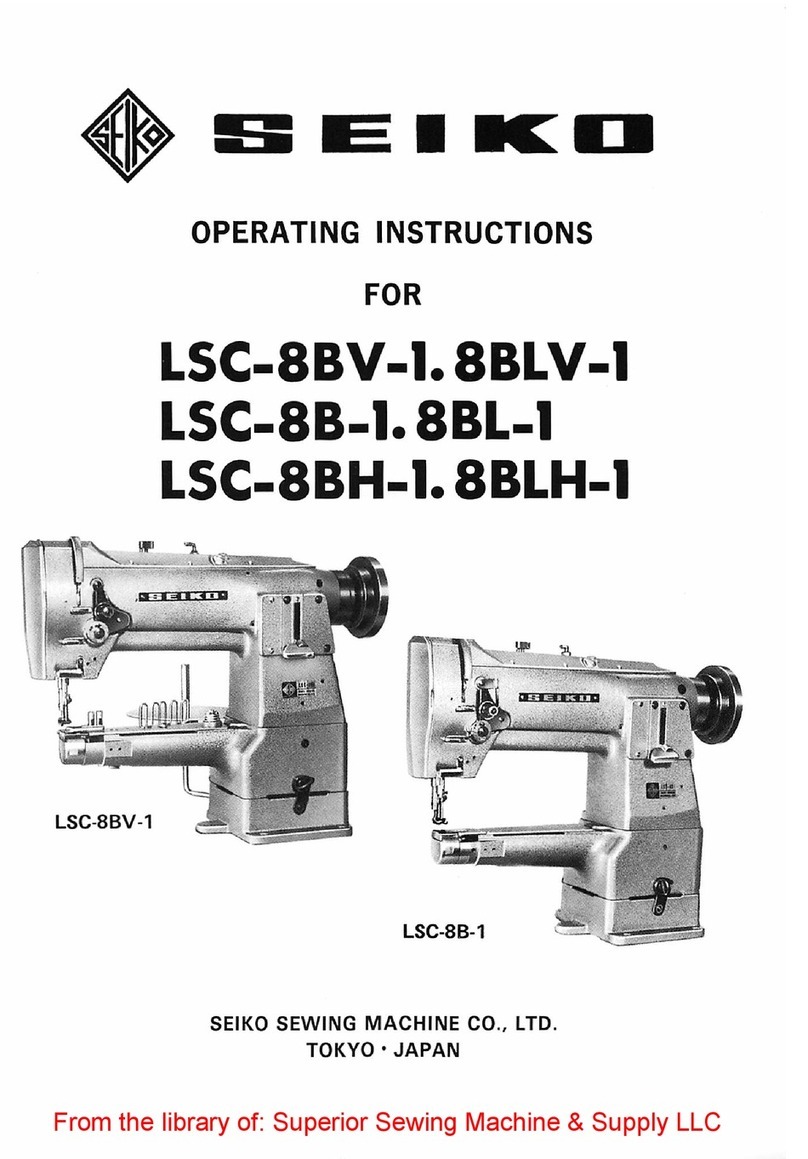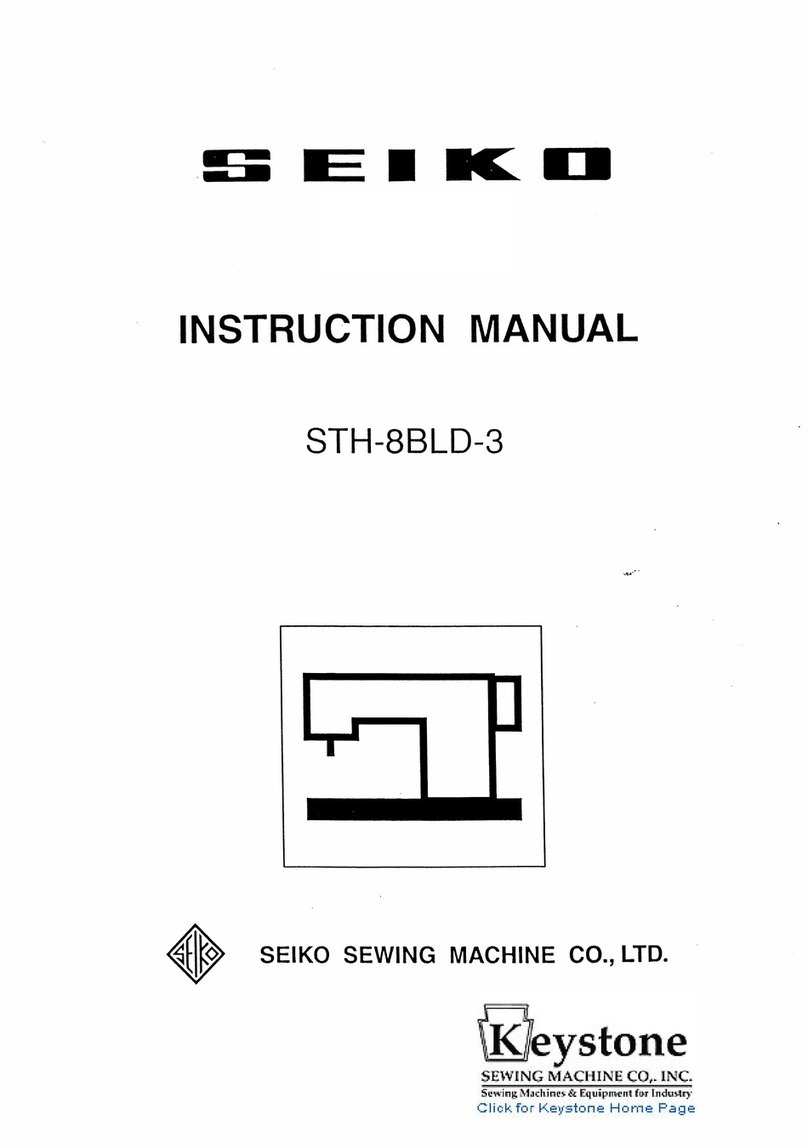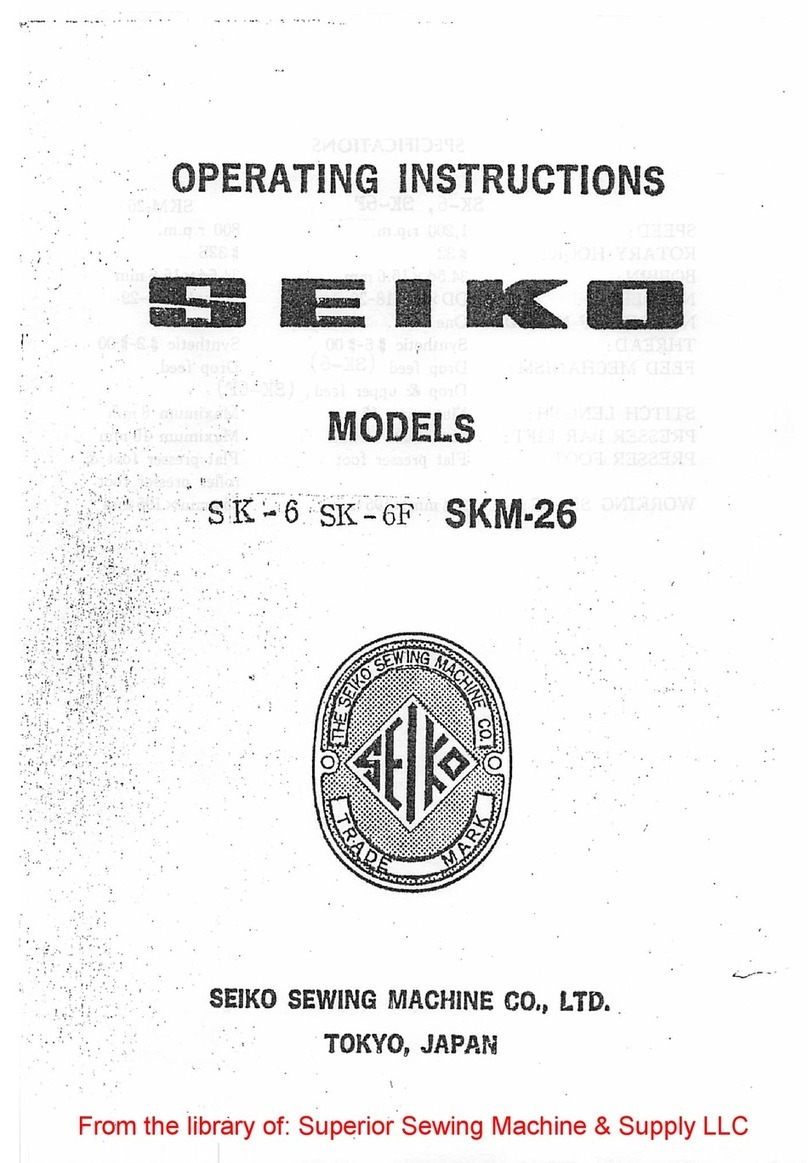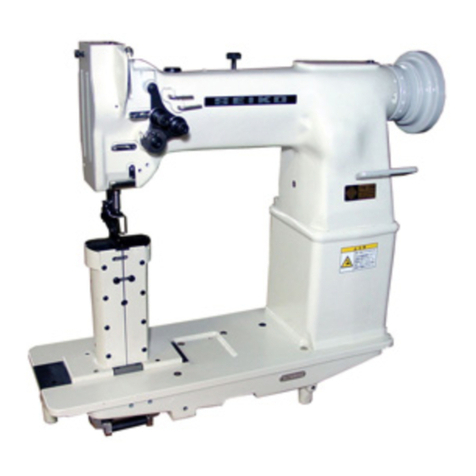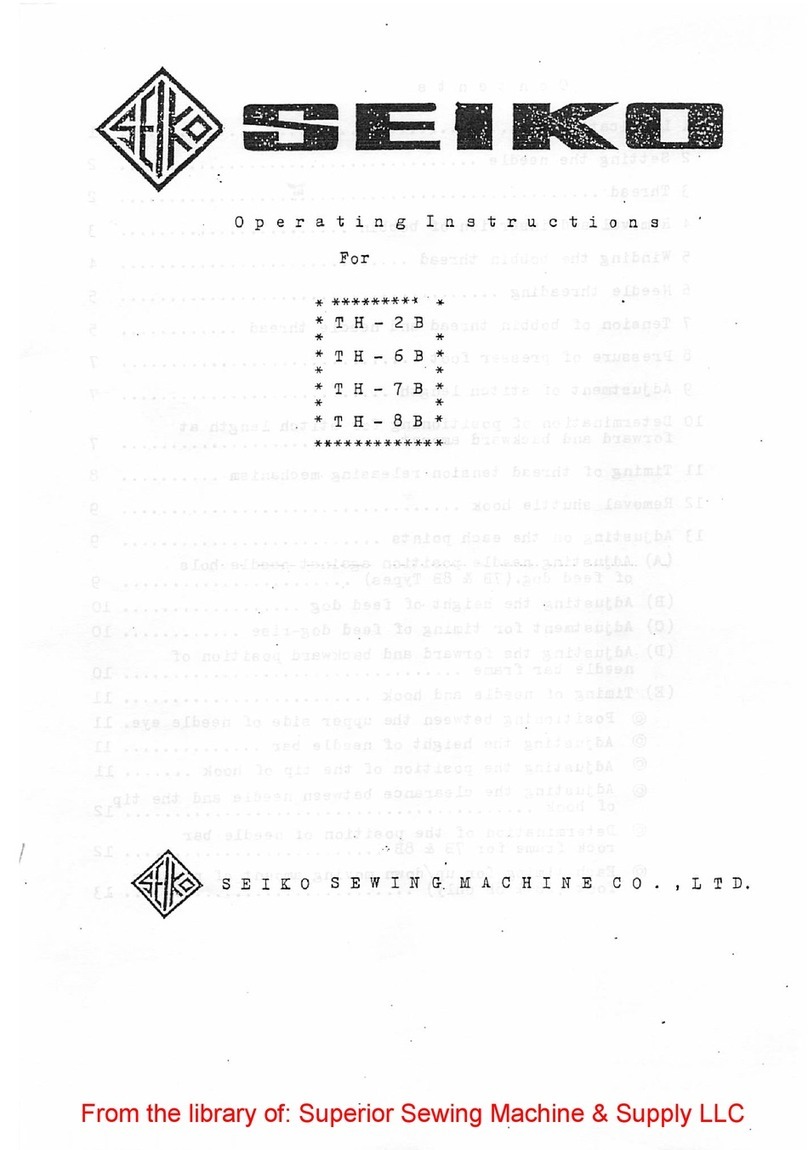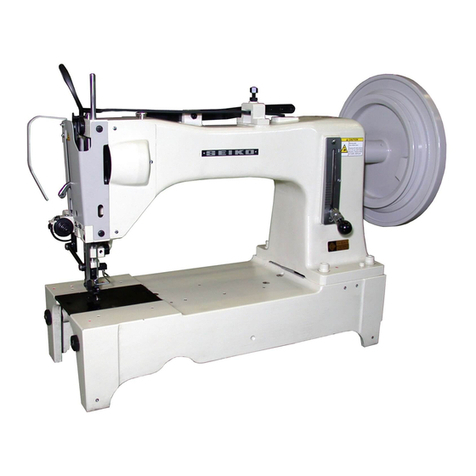OILING
Machine
has an automatic oiling mechanism, but, oiling points (Arrows, Fig. 9) are
provided for hand oiling for parts in movable contact which are not lubricated
from
oil
reservior.
— .
Fig. 9
Automatic
lubrication
system
(A) Automatic oiling system is composed of an oil reservior, holicw arm shaft and
hollow bed shaft through which necessary amount of oil is delivered to all of parts in
movable
contact, except these parts described in the
column
(B),
while
machine
is in
operation. Oil is distributed by centrifugal force through small jets.
The amount of oil flow, which should be slow, can be seen in the oil window (B,
Fig. 12), It can be adjusted with oil
pump
(C Fig. 11) by opening or closing it.
When running in,
keep
speed
at
1,800
to
2,500
R.P.M.
(B) Keep clean oil reservoir and pour oil in the reservoir (oil pan) up to the center
line (A, Fig. 10).
When
oil has been soiled for several months use, release it through the hole (B, Fig.
10) and pour new oil in the oil reservoir.
